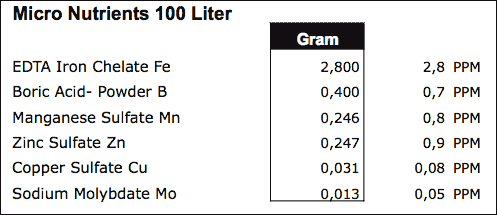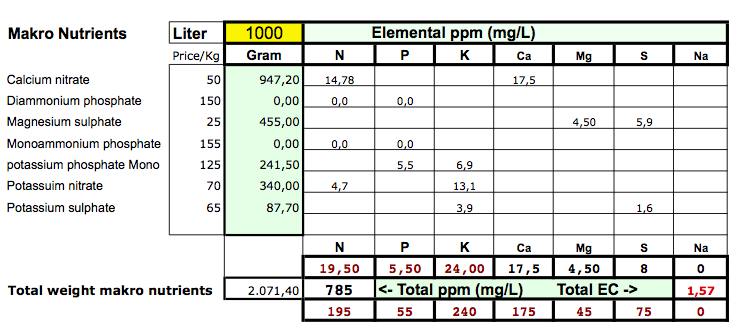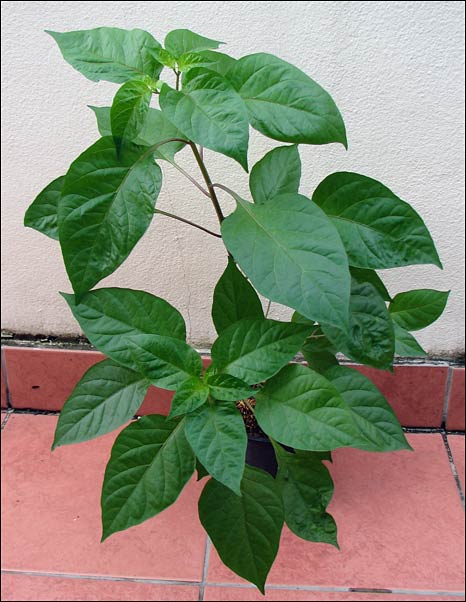i have not been very successful in growing hydroponic hot peppers for the past year. this was due to nonexistence of pre-mixed hydro nutrients in the Philippines. since we have vast space of land for agriculture, hydroponics just would not flourish. all ferts sold are for soil culture. however, we have unlimited supplies of chemical compounds for home brewing. endlessly searching for the right mix is very frustrating, npk ratio, ec, ppm etc. there are as many formulas as there are hydro growers. i am after the correct npk ratio of nutrients exclusively for peppers (if there is) . i am posting two formulas i got from other hot pepper forums with slight modifications considering the compounds available nearest home. Please comment & recommend according to your experience and knowledge. The seeds i mail ordered from the US and AUS are ready to sprout. i am growing jolokias and habs. Philipperv is in the philippines but not into hydro. and please note, i am not a chemist i got the adjustments from Nutron2000 a nutrient formulation software (it has recommended mix for peppers but is extremely different from all others).
. i am posting two formulas i got from other hot pepper forums with slight modifications considering the compounds available nearest home. Please comment & recommend according to your experience and knowledge. The seeds i mail ordered from the US and AUS are ready to sprout. i am growing jolokias and habs. Philipperv is in the philippines but not into hydro. and please note, i am not a chemist i got the adjustments from Nutron2000 a nutrient formulation software (it has recommended mix for peppers but is extremely different from all others).
(Formula 1)
into 100 liters of water to be mixed in parts:
Part A
Calcium Nitrate 94g
Potassium Nitrate 33g
Iron (EDTA) 4.1g
Part B
Potassium Nitrate 33g
MonoPotassium Phospate 26g
Magnesium Sulfate (Epsom) 43g
Manganese Sulfate .4g
Zinc Sulfate .26g
Boric Acid .33g
Copper Sulfate 4.44g
Ammonium Molybdate .2g
This gives
N - 233 ppm
P - 54 ppm
K - 326 ppm
Mg - 42 ppm
Ca - 188 ppm
S - 55 ppm
and the micro nutrients
Fe - 4 ppm
Mn - .98 ppm
Zn - .59 ppm
B - .59 ppm
Cu - 9.99 ppm
Mo - .978 ppm
============================================
(Formula 2 almost mimics CHILI FOCUS ratio -Ca)
into 100 liters of water to be mixed in parts:
Part A
Calcium Nitrate 46g
Potassium Nitrate 11g
Iron (EDTA) 4.1g
Part B
Potassium Nitrate 11g
MonoPotassium Phospate 23g
Magnesium Sulfate (Epsom) 56g
Manganese Sulfate .4g
Zinc Sulfate .26g
Boric Acid .33g
Copper Sulfate 4.44g
Ammonium Molybdate .2g
This gives
N - 98 ppm
P - 48 ppm
K - 180 ppm
Mg - 55 ppm
Ca - 91 ppm
S - 91 ppm
and the micro nutrients
Fe - 4 ppm
Mn - .98 ppm
Zn - .59 ppm
B - .59 ppm
Cu - 9.99 ppm
Mo - .978 ppm
+ Humic Acid
======================================
please tell me which is which, i am inclined to use formula #1. Am i on the right path or am i dreaming? thanks for bearing with my long post.
(Formula 1)
into 100 liters of water to be mixed in parts:
Part A
Calcium Nitrate 94g
Potassium Nitrate 33g
Iron (EDTA) 4.1g
Part B
Potassium Nitrate 33g
MonoPotassium Phospate 26g
Magnesium Sulfate (Epsom) 43g
Manganese Sulfate .4g
Zinc Sulfate .26g
Boric Acid .33g
Copper Sulfate 4.44g
Ammonium Molybdate .2g
This gives
N - 233 ppm
P - 54 ppm
K - 326 ppm
Mg - 42 ppm
Ca - 188 ppm
S - 55 ppm
and the micro nutrients
Fe - 4 ppm
Mn - .98 ppm
Zn - .59 ppm
B - .59 ppm
Cu - 9.99 ppm
Mo - .978 ppm
============================================
(Formula 2 almost mimics CHILI FOCUS ratio -Ca)
into 100 liters of water to be mixed in parts:
Part A
Calcium Nitrate 46g
Potassium Nitrate 11g
Iron (EDTA) 4.1g
Part B
Potassium Nitrate 11g
MonoPotassium Phospate 23g
Magnesium Sulfate (Epsom) 56g
Manganese Sulfate .4g
Zinc Sulfate .26g
Boric Acid .33g
Copper Sulfate 4.44g
Ammonium Molybdate .2g
This gives
N - 98 ppm
P - 48 ppm
K - 180 ppm
Mg - 55 ppm
Ca - 91 ppm
S - 91 ppm
and the micro nutrients
Fe - 4 ppm
Mn - .98 ppm
Zn - .59 ppm
B - .59 ppm
Cu - 9.99 ppm
Mo - .978 ppm
+ Humic Acid
======================================
please tell me which is which, i am inclined to use formula #1. Am i on the right path or am i dreaming? thanks for bearing with my long post.



